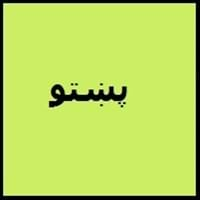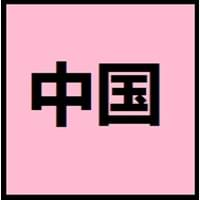Countries
Afganistan
China, Hong Kong, Macau, Singapore, Taiwan
National Language
Afganistan, Pakistan, Pashtun diaspora
China, Taiwan
Second Language
Not spoken in any of the countries
Republic of Brazil
Speaking Continents
Asia
Asia
Minority Language
Pakistan
Indonesia, Malaysia
Regulated By
Academy of Sciences of Afghanistan, Pashto Academy (Pakistan)
Chinese Language Standardization Council, National Commission on Language and Script Work, Promote Mandarin Council
Interesting Facts
- Pashto language is originated in the regions of Paktika and Paktia areas of Afghanistan.
- The first Pashto poem was written in the 7th century.
- Chinese language is tonal, since meaning of a word changes according to its tone.
- In Chinese language, there is no grammatical distinction between singular or plural, no declination of verbs according to tense, mood and aspect.
Similar To
Persian and Balochi Languages
Not Available
Derived From
Not Available
Not Available
Alphabets in
Pashto-Alphabets.jpg#200
Chinese.jpg#200
Scripts
Arabic
Chinese Characters and derivatives
Writing Direction
Right-To-Left, Horizontal
Left-To-Right, Horizontal, Top-To-Bottom
Hello
(salaam) سلام
您好 (Nín hǎo)
Thank You
(manana) مننه (tashakor) تشكر
谢谢 (Xièxiè)
How Are You?
(ta sanga yee?) څنگه يې؟
你好吗? (Nǐ hǎo ma?)
Good Night
(shpa mo pa kheyr) شپه مو په خير
晚安 (Wǎn'ān)
Good Evening
(maakhaam mo pa kheyr) ماښام مو په خير
晚上好 (Wǎnshàng hǎo)
Good Afternoon
(wradz mo pa kheyr) ورځ مو په خير
下午好 (Xiàwǔ hǎo)
Good Morning
(sahr pikheyr) سحر پخير
早安 (Zǎo ān)
Please
(lotfan) لطفا
请 (Qǐng)
Sorry
(zeh mutaasif yum) زه هتاسف يم
遗憾 (Yíhàn)
Bye
(da khoday pa amaan) دخداى په امان
再见 (Zàijiàn)
I Love You
زه ستا سره مينه کوم (za la ta sara meena kawom)
我爱你 (Wǒ ài nǐ)
Excuse Me
(bakhena ghwaarum) بخښنه غواړم
劳驾 (Láojià)
Dialect 1
Central Pashto
Mandarin
Where They Speak
Afganistan, Pakistan
China, Malaysia, Singapore, Taiwan
Dialect 2
Northern Pashto
Wu
Where They Speak
Afganistan, Pakistan
China, United States of America
Where They Speak
Afganistan, Pakistan
China, Malaysia, Singapore, Vietnam
Second Language Speakers
Not Available
Native Name
(paṧto) پښتو
中文 (zhōngwén)
Alternative Names
Kandahar Pashto, Qandahar Pashto, Southwestern Pashto, Pushto
Not Available
French Name
pachto
chinois
German Name
Paschtu
Chinesisch
Pronunciation
[ˈpəʂt̪oː], [ˈpʊxt̪oː]
Not Available
Language Family
Indo-European Family
Sino-Tibetan Family
Subgroup
Indo-Iranian
Not Available
Branch
Iranian
Not Available
Early Forms
No early forms
No early forms
Standard Forms
Central Pashto, Northern Pashto, Yusufzai Pashto, Southern Pashto
Standard Chinese
Signed Forms
Not Available
Wenfa Shouyu 文法手語 ("Grammatical Sign Language", Signed Mandarin (Taiwan))
Scope
Individual
Individual
ISO 639 6
Not Available
Not Available
Glottocode
pash1269
sini1245
Linguasphere
58-ABD-a
79-AAA
Language Type
Living
Living
Language Linguistic Typology
Subject-Object-Verb
Subject-Verb-Object
Language Morphological Typology
Fusional
Analytic, Isolating
All Pashto and Chinese Dialects
Most languages have dialects where each dialect differ from other dialect with respect to grammar and vocabulary. Here you will get to know all Pashto and Chinese dialects. Various dialects of Pashto and Chinese language differ in their pronunciations and words. Dialects of Pashto are spoken in different Pashto Speaking Countries whereas Chinese Dialects are spoken in different Chinese speaking countries. Also the number of people speaking Pashto vs Chinese Dialects varies from few thousands to many millions. Some of the Pashto dialects include: Central Pashto, Northern Pashto. Chinese dialects include: Mandarin , Wu. Also learn about dialects in South American Languages and North American Languages.
Pashto and Chinese Speaking population
Pashto and Chinese speaking population is one of the factors based on which Pashto and Chinese languages can be compared. The total count of Pashto and Chinese Speaking population in percentage is also given. The percentage of people speaking Pashto language is 0.58 % whereas the percentage of people speaking Chinese language is 16.00 %. When we compare the speaking population of any two languages we get to know which of two languages is more popular. Find more details about how many people speak Pashto and Chinese on Pashto vs Chinese where you will get native speakers, speaking population in percentage and native names.
Pashto and Chinese Language Codes
Pashto and Chinese language codes are used in those applications where using language names are tedious. Pashto and Chinese Language Codes include all the international language codes, glottocodes and linguasphere.





